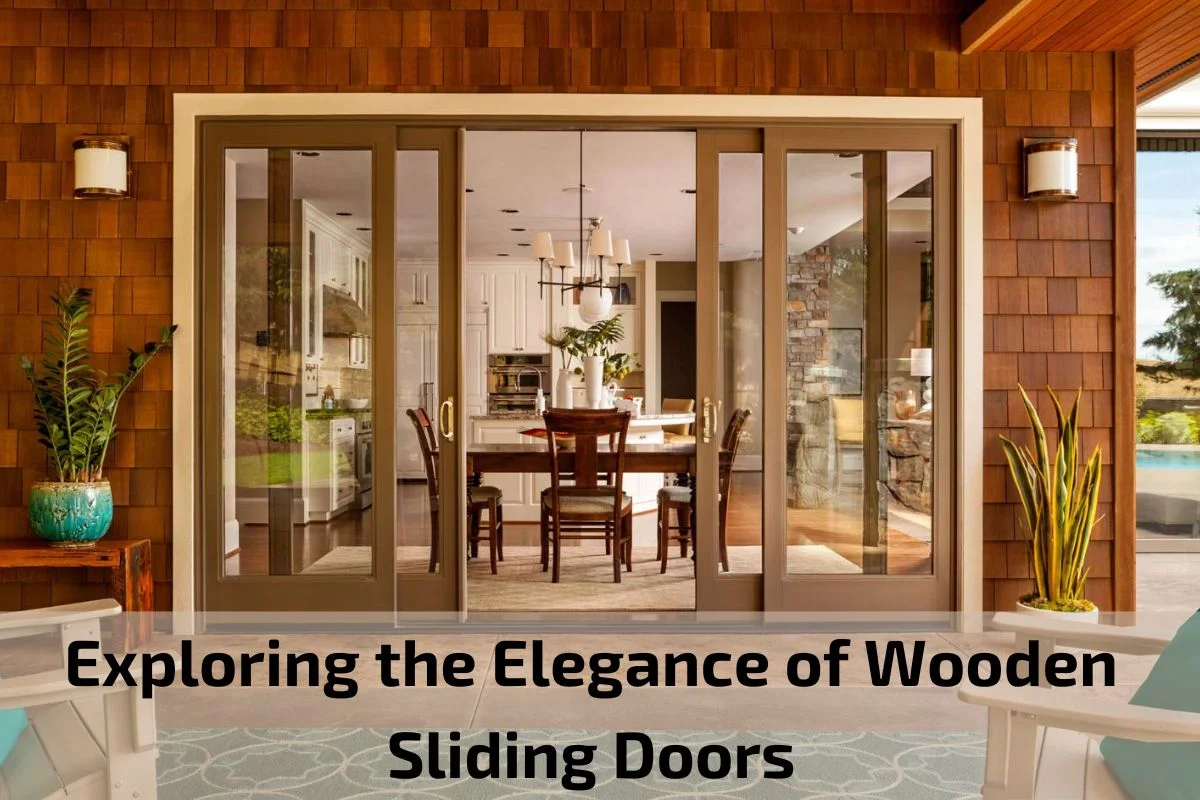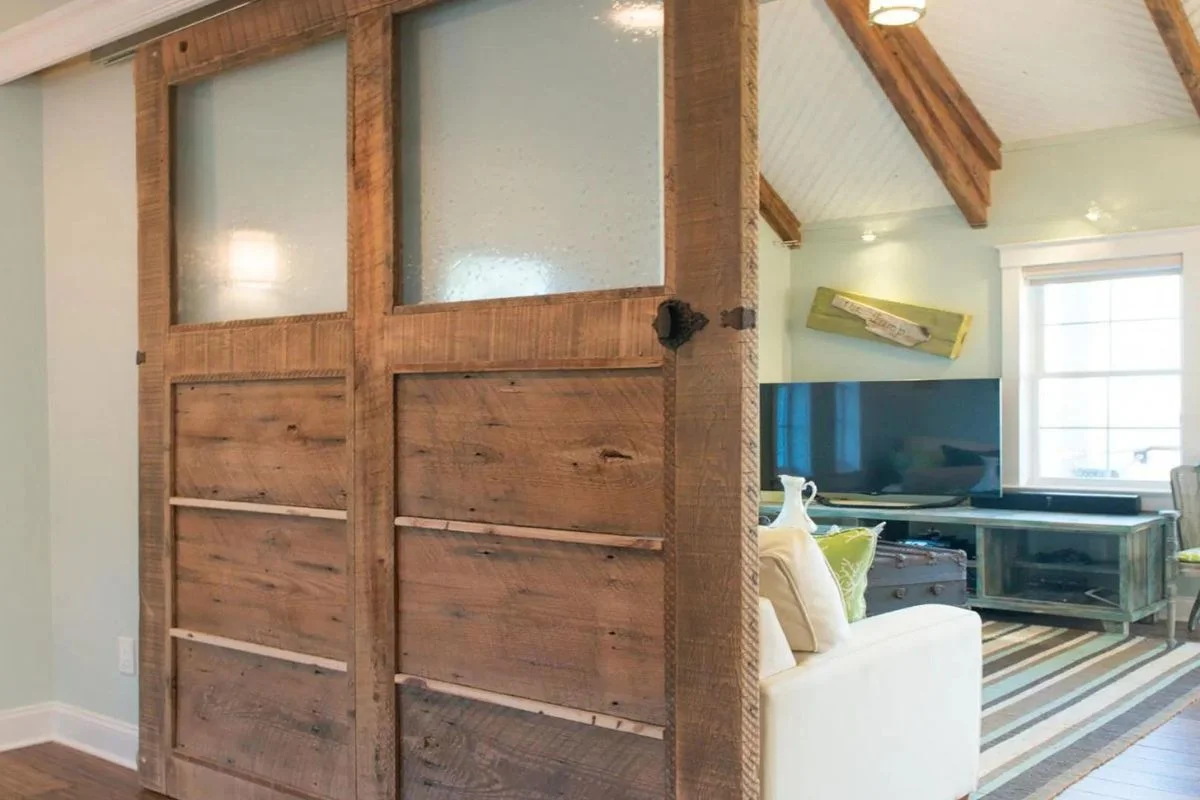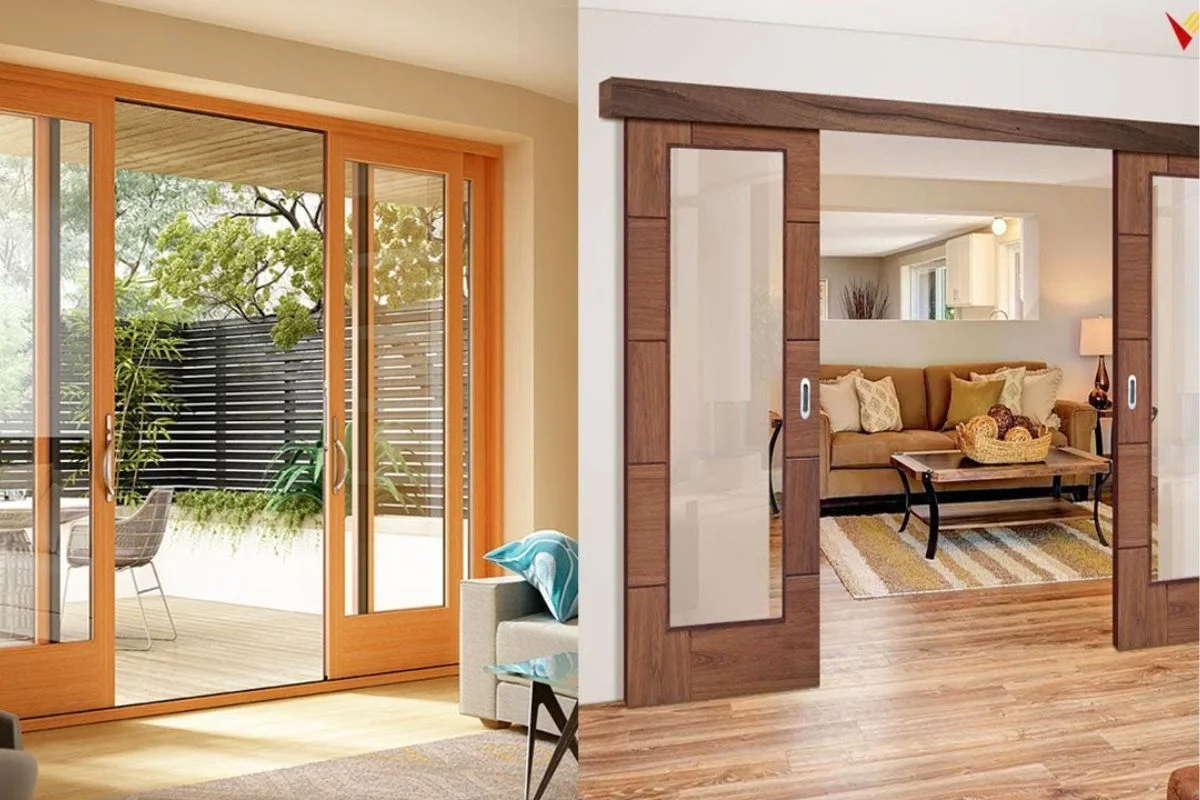
Wooden sliding doors exude timeless elegance and charm, offering a unique blend of beauty, functionality, and versatility in home design. As homeowners seek to infuse their living spaces with warmth and sophistication, wooden sliding doors have emerged as a popular choice for both interior and exterior applications.
The allure of wooden sliding doors lies in their ability to seamlessly integrate with various architectural styles, from rustic and traditional to modern and contemporary. With their natural aesthetic appeal and inherent durability, wooden sliding doors add character and personality to any room while enhancing the overall ambiance of the home.
In this article, we embark on a journey to explore the elegance of wooden sliding doors, delving into their design versatility, practical benefits, and aesthetic appeal. From the rich grain patterns of natural wood to the sleek lines of contemporary designs, wooden sliding doors captivate the imagination and elevate the visual allure of living spaces.
Join us as we delve into the world of wooden sliding doors, uncovering the inherent beauty and functionality that make them a timeless addition to any home. Whether used as room dividers, patio entrances, or closet enclosures, wooden sliding doors exemplify the perfect union of form and function, enhancing the charm and elegance of interior and exterior spaces alike.
Introduction to Wooden Sliding Doors
Wooden sliding doors stand as timeless fixtures in home design, blending functionality with elegance to create seamless transitions between indoor and outdoor spaces. These doors, crafted from natural wood materials, offer a unique combination of aesthetic appeal, durability, and practicality, making them a popular choice for both traditional and modern homes alike.
Unlike traditional hinged doors, wooden sliding doors glide effortlessly along tracks, saving valuable floor space and adding a touch of sophistication to any room. They serve as architectural focal points, drawing attention with their natural grain patterns, rich textures, and warm hues that complement a variety of interior design styles.
In this section, we’ll explore the charm and versatility of wooden sliding doors, delving into their unique characteristics, design options, and the benefits they bring to residential spaces. From rustic barn-style doors to sleek contemporary panels, wooden sliding doors offer endless possibilities for enhancing the beauty and functionality of your home.
Importance of Wooden Sliding Door in Home Design
Wooden sliding doors play a pivotal role in home design, offering a multitude of benefits that contribute to the overall functionality, aesthetics, and ambiance of living spaces. Here are several reasons why wooden sliding doors are important in home design:
Space Optimization:
- Wooden sliding doors are ideal for maximizing space utilization, especially in areas where traditional swinging doors may be impractical due to limited space.
- By sliding along tracks instead of swinging open, these doors save valuable floor space, making them perfect for smaller rooms or areas with tight layouts.
Seamless Indoor-Outdoor Connection:
- Wooden sliding doors provide a seamless transition between indoor and outdoor living spaces, blurring the boundaries and creating a cohesive flow between the two environments.
- They allow homeowners to enjoy panoramic views of their surroundings while inviting natural light and fresh air into the interior spaces.
Aesthetic Appeal:
- Wooden sliding doors add a touch of natural warmth and sophistication to any home decor.
- The rich textures, grain patterns, and warm tones of wood create a sense of coziness and elegance, enhancing the overall ambiance of the living space.
Versatility in Design:
- Wooden sliding doors come in a variety of designs, styles, and finishes, allowing homeowners to customize them to match their specific tastes and preferences.
- Whether opting for rustic barn-style doors or sleek contemporary panels, wooden sliding doors can complement a wide range of interior design schemes, from traditional to modern.
Enhanced Natural Lighting:
- By incorporating glass panels or sidelights, wooden sliding doors allow ample natural light to filter into interior spaces, brightening up rooms and reducing the need for artificial lighting during the day.
- This not only creates a more inviting and uplifting atmosphere but also helps reduce energy consumption.
Functional Practicality:
- Wooden sliding doors are highly functional and easy to operate, offering smooth and quiet gliding along tracks.
- They provide convenient access to rooms, closets, and outdoor areas while minimizing the risk of collisions with furniture or walls.
Privacy and Sound Insulation:
- Wooden sliding doors offer privacy and sound insulation, making them ideal for bedrooms, bathrooms, and home offices.
- When closed, they create a barrier that helps reduce noise transmission between different areas of the home, enhancing comfort and tranquility.
Advantages and Disadvantages of Wooden Sliding Doors
Wooden sliding doors offer several advantages and disadvantages that homeowners should consider before incorporating them into their home design. Understanding these factors can help make informed decisions about whether wooden sliding doors are the right choice for a particular space. Let’s explore the advantages and disadvantages:
Advantages:
Space Saving:
- Wooden sliding doors slide along tracks instead of swinging open, saving valuable floor space compared to traditional hinged doors.
- Ideal for rooms with limited space or where maximizing floor area is a priority.
Seamless Indoor-Outdoor Transition:
- Wooden sliding doors create a seamless transition between indoor and outdoor living spaces, enhancing the flow of natural light and ventilation.
- Perfect for connecting living rooms, dining areas, and patios or gardens.
Aesthetic Appeal:
- Wooden sliding doors add a touch of natural beauty and warmth to any room with their rich textures, grain patterns, and warm tones.
- Available in various wood species and finishes to complement different interior design styles.
Versatility in Design:
- Wooden sliding doors come in a wide range of designs, from rustic barn-style doors to sleek contemporary panels, offering versatility to suit various aesthetic preferences.
- Customizable with glass panels, decorative inserts, and hardware options to enhance visual appeal.
Enhanced Natural Lighting:
- Wooden sliding doors with glass panels allow ample natural light to enter interior spaces, reducing the need for artificial lighting during the day.
- Create a brighter and more inviting atmosphere in the home.
Easy Operation:
- Wooden sliding doors are easy to operate, gliding smoothly along tracks with minimal effort.
- Suitable for individuals with mobility issues or those seeking convenient access to different areas of the home.
Disadvantages:
Maintenance Requirements:
- Wooden sliding doors require regular maintenance to preserve their appearance and functionality.
- Periodic cleaning, lubrication of tracks, and inspection for signs of wear or damage are necessary to ensure smooth operation and longevity.
Potential for Warping or Swelling:
- Wooden sliding doors may be susceptible to warping, swelling, or moisture damage, especially in humid or damp environments.
- Proper sealing, finishes, and ventilation are essential to prevent wood deterioration.
Cost Considerations:
- Wooden sliding doors tend to be more expensive than other door materials, such as vinyl or aluminum.
- The cost of materials, customization options, and installation may exceed the budget for some homeowners.
Limited Insulation:
- Wooden sliding doors may have limited insulation properties compared to doors made from alternative materials, such as fiberglass or steel.
- They may not provide as much thermal or sound insulation, leading to potential energy loss and noise transmission.
Weight and Durability:
- Wooden sliding doors can be heavier than doors made from lighter materials, which may affect ease of installation and operation.
- Proper support and reinforcement of door frames and tracks are necessary to prevent sagging or misalignment over time.
Types and Designs of Wooden Sliding Doors
Wooden sliding doors come in a variety of types and designs, each offering unique features and aesthetic appeal to complement different architectural styles and interior décors. From traditional barn-style doors to modern minimalist panels, there’s a wooden sliding door option to suit every preference. Let’s explore some common types and designs of wooden sliding doors:
Traditional Barn-Style Doors:
- Inspired by rustic farmhouses, traditional barn-style wooden sliding doors feature classic X-brace or Z-brace patterns.
- These doors add a charming, rustic touch to interior spaces and are often used as room dividers or closet doors.
Contemporary Panel Doors:
- Contemporary panel wooden sliding doors feature sleek, clean lines and minimalistic designs.
- They are characterized by flat or raised panels and are ideal for modern and minimalist interior décors.
- Available in various wood species and finishes to match existing furnishings and architectural elements.
French Sliding Doors:
- French sliding doors combine the elegance of traditional French doors with the space-saving functionality of sliding doors.
- Featuring multiple glass panels with wooden frames, these doors allow ample natural light to enter interior spaces while creating a timeless aesthetic.
Japanese Shoji Doors:
- Inspired by traditional Japanese architecture, Shoji wooden sliding doors feature delicate wooden frames with translucent paper panels.
- These doors add an element of serenity and simplicity to interior spaces while diffusing light and creating privacy.
Rustic Reclaimed Wood Doors:
- Rustic reclaimed wood sliding doors are crafted from salvaged or repurposed wood materials, such as old barn wood or reclaimed timber.
- Each door boasts unique textures, knots, and imperfections, adding character and authenticity to interior spaces.
Glass and Wood Combination Doors:
- Glass and wood combination sliding doors feature wooden frames with glass panels, offering a perfect blend of natural warmth and transparency.
- These doors create a seamless connection between indoor and outdoor spaces while allowing unobstructed views of the surroundings.
Custom Carved Wooden Doors:
- Custom carved wooden sliding doors showcase intricate designs, patterns, and motifs carved directly into the wood surface.
- These doors serve as works of art, adding a touch of luxury and sophistication to interior spaces while reflecting the homeowner’s unique style and personality.
Bamboo Sliding Doors:
- Bamboo sliding doors feature lightweight and eco-friendly bamboo materials, offering a sustainable and stylish alternative to traditional hardwood doors.
- Bamboo doors add a touch of natural elegance and warmth to interior spaces while promoting environmental consciousness.
Integrating Wooden Sliding Doors into Interior Design
Integrating wooden sliding doors into interior design can significantly enhance the aesthetic appeal and functionality of living spaces. Whether used as room dividers, closet enclosures, or focal points, wooden sliding doors offer versatility and style that seamlessly blend with various architectural styles and décor schemes. Here are some tips for effectively integrating wooden sliding doors into interior design:
Room Dividers:
- Use wooden sliding doors to create flexible living spaces by dividing large rooms or open-concept areas.
- Opt for sleek, contemporary panel doors for a modern look, or choose traditional barn-style doors for a rustic touch.
- Sliding doors provide privacy when closed and can be opened to promote airflow and connectivity between spaces.
Closet Enclosures:
- Replace traditional hinged closet doors with wooden sliding doors to maximize space and improve accessibility.
- Choose doors with glass panels to showcase wardrobe contents or opt for solid wood doors for added privacy and concealment.
- Consider customizing the doors with decorative inserts or hardware to enhance visual interest and coordination with surrounding décor.
Creating Focal Points:
- Use wooden sliding doors as focal points in interior design, drawing attention to specific areas of the home.
- Install oversized or custom-designed doors with unique finishes or intricate carvings to make a bold statement.
- Position sliding doors to frame architectural features, such as fireplaces, windows, or accent walls, creating visual interest and depth.
Enhancing Privacy Solutions:
- Install wooden sliding doors in bedrooms, home offices, or bathrooms to provide privacy without sacrificing style.
- Choose doors with soundproofing features or opaque glass panels to minimize noise transmission and maintain privacy.
- Experiment with different door designs and configurations to find the perfect balance between aesthetics and functionality.
Indoor-Outdoor Connectivity:
- Use wooden sliding doors to seamlessly connect interior living spaces with outdoor patios, gardens, or decks.
- Select doors with large glass panels and minimal frames to maximize natural light and views of the surrounding landscape.
- Incorporate sliding doors into transitional areas, such as sunrooms or enclosed porches, to create inviting and versatile spaces for relaxation and entertainment.
Coordinating with Existing Décor:
- Choose wooden sliding doors that complement existing architectural elements, furnishings, and finishes within the home.
- Coordinate door hardware, trim, and accessories with other design elements to create a cohesive and harmonious look.
- Consider the overall color palette, texture, and scale of the space when selecting door materials and finishes to ensure visual continuity and balance.
Maintenance Tips for Wooden Sliding Doors
Proper maintenance is essential to preserve the beauty, functionality, and longevity of wooden sliding doors. By following these maintenance tips, homeowners can ensure that their doors remain in optimal condition for years to come:
Regular Cleaning:
- Clean the surfaces of wooden sliding doors regularly using a soft cloth dampened with a mild detergent solution.
- Remove dust, dirt, and fingerprints to keep the doors looking fresh and attractive.
- Avoid using harsh chemical cleaners or abrasive materials that may damage the wood finish.
Lubricate Moving Parts:
- Apply a silicone-based lubricant to the tracks, rollers, and hinges of wooden sliding doors to ensure smooth operation.
- Lubrication helps prevent friction and wear, allowing the doors to glide effortlessly along the tracks.
Inspect for Wear and Damage:
- Regularly inspect the wooden sliding doors for signs of wear, damage, or deterioration.
- Check for cracks, splits, or warping in the wood, as well as loose or damaged hardware components.
- Address any issues promptly to prevent further damage and ensure the doors function properly.
Seal and Protect the Wood:
- Apply a high-quality wood sealant or finish to protect the surface of the wooden sliding doors from moisture, UV rays, and other environmental factors.
- Sealants help prevent warping, swelling, and discoloration of the wood, prolonging its lifespan and maintaining its appearance.
Keep Tracks Clean and Clear:
- Regularly clean the tracks and channels of wooden sliding doors to remove dirt, debris, and obstructions.
- Use a soft brush or vacuum cleaner to clear away any buildup that may affect the smooth operation of the doors.
- Ensure that the tracks are properly aligned and free from obstacles to prevent jams or sticking.
Protect from Moisture:
- Minimize exposure to moisture by keeping wooden sliding doors away from areas prone to high humidity or moisture, such as bathrooms or kitchens.
- Use a dehumidifier or ventilation fan to reduce moisture levels in enclosed spaces and prevent mold or mildew growth.
- Wipe up spills or water splashes immediately to prevent water damage to the wood.
Address Repairs Promptly:
- If wooden sliding doors become damaged or show signs of wear, address repairs promptly to prevent further deterioration.
- Repair cracks, chips, or scratches in the wood using wood filler or touch-up paint matched to the door’s finish.
- Replace damaged hardware components, such as hinges or handles, with high-quality replacements to ensure proper function and security.
Conclusion
In conclusion, wooden sliding doors stand as versatile and stylish additions to any home, offering a perfect blend of aesthetic appeal, functionality, and practicality. From their natural beauty and warmth to their space-saving design and seamless indoor-outdoor connectivity, wooden sliding doors enhance the ambiance and functionality of living spaces in myriad ways.


